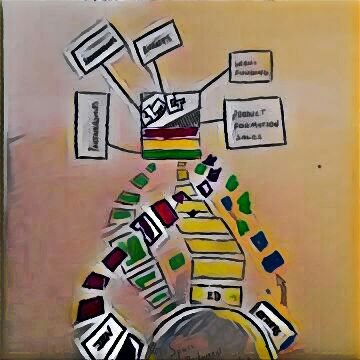What is Consilience?
In chapter two of the book Consilience, biologist Edward O. Wilson explained the concept of the term “consilience” and proposed how we might begin to merge fields of study. According to Wilson, William Whewell first used the term in The Philosophy of the Inductive Sciences in 1840 and explained it as a “ ‘ jumping together’ of knowledge by the linking of facts and fact-based theory across disciplines to create a common groundwork of explanation.” Wilson went on to explain how we can make use of this philosophy to solve some of our current problems such as ethnic conflict, arms escalation, overpopulation, abortion, the environment and poverty. He proposed that we could better solve these problems by “integrating knowledge from the natural sciences with that of the social sciences and humanities.” By taking this approach Wilson said diversity and depth of knowledge will increase and that “order, not chaos, lies beyond the horizon.”
Wilson won the Pulitzer Prize twice for his books On Human Nature (1978) and The Ants (1990, with Bert Holldobler) and has been a teacher at Harvard University. Consilience was both praised and highly critiqued when it was published in 1999.
Using Wilson and others as my guide, I propose that education can thrive on the “edge of chaos” (Wilson, p. 97). The classroom is, after all, an unpredictable environment, where agents of change and disruption threaten to overturn the imposing order at any given time. A student mood swing, an ADHD outburst, a students day dream, a drug problem, a recent fight at the school, overcoming peer pressure, distraction from noise, fluorescent lighting, confusion over subject matter, pressure to meet district and school standards all threaten to interrupt order, goals and academic progress.
Then, along comes chaos theory, consilience, emergent behavior and creative problem solving. These all offer a solution. What I am suggesting is that we tap into this energy, and acting as a catalyst, put this organism into motion. Like the sending of an e-mail message, we write and structure it, and with the push of a button, send it on its way. Though there is a lot of activity there – the working of the computer, the use of language, the Internet, electricity, binary code, web servers, URLs, etc., the e-mail is sent and finds its recipient in seconds – making its way through the maze of cyberspace in what seems to be a miracle.
Bloom, back in the 1950’s, would have probably agreed that the structured regurgitation of information may give us temporary order. But, in the long run, we end up producing automatons. Instead, I would argue, as Wilson does, that we begin to merge fields of study together, learn what we can from this new synthesis and apparent disorder, so that we can solve larger problems.
For example, we create a problem based class, and look to student creativity to solve seemingly complex problems. As I will submit later, Global Challenge – a classroom microcosm – is one such way to put these theories into action.
Whether Wilson realized this at the time or not, he is suggesting or supporting some concepts that are very relevant to primary and secondary education. Often in his book, he uses the terms “conceptual unity,” the “communal mind,” and “microcosm” to explain his view of how things should come together. Later, he tackles the difficult topic of complexity or chaos theory. Further on, I will show how these theories should be connected to educational design.
Wilson, Edward O. Consilience: The Unity of Knowledge. New York: Vintage Books, a division of Random House, Inc., 1999.
From the second introductory page to the book: (condensed and paraphrased)
Wilson received his B.S. and M.S. in biology from the University of Alabama and , in 1955, his Ph.D. in biology from Harvard. He is the winner of the 1977 National Medal of Science, the Crafoord Prize from the Royal Swedish Academy of Sciences (1990), the International Prize for Biology from Japan (1993), the Gold Medal of the Worldwide Fund for Nature (1990) and the Audobon Medal of the National Audubon Society (1995).
Summary and Analysis of Consilience, by Edward O. Wilson was originally written for EDTE 290 (Seminar for Culminating Experience, Dr. Kit Newman, CSUS)
Drawing by Lee Chazen
Filtering by Prisma

very interesting post. i followed you! perhaps u like my page and find some graffiti art u like :) <3 kalipo
Thanks! Yes -- big fan of graffiti art since the days of Basquiat. Thanks for the follow! -- L.
Thanks for posting an interesting topic. Upvoted and followed. I will submit you for Project Curie as well. Peace. Good luck.
Thanks for the follow. Just followed you back. Interesting page! Appreciate the referral to Project Curie. Will be looking into that. Good luck to you too!